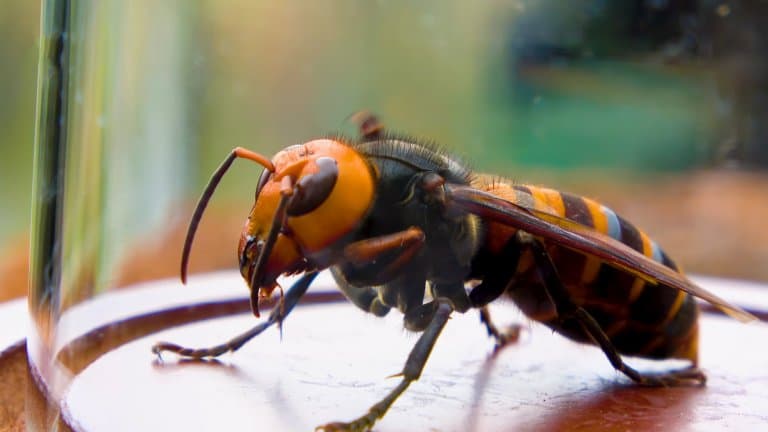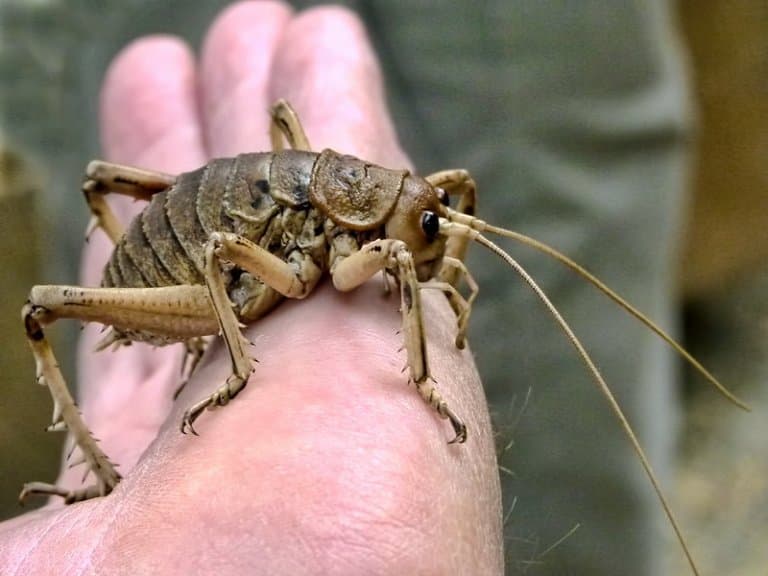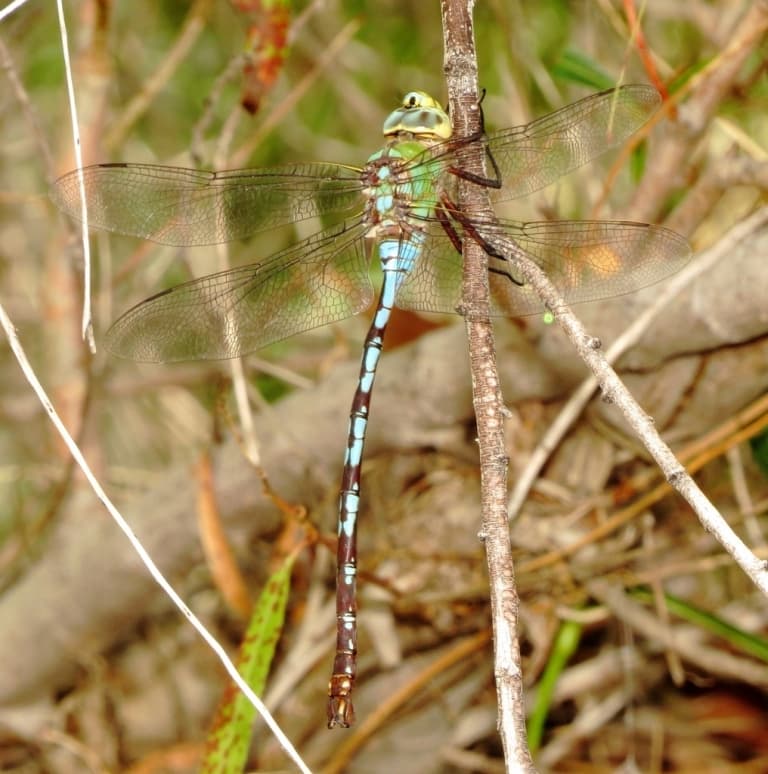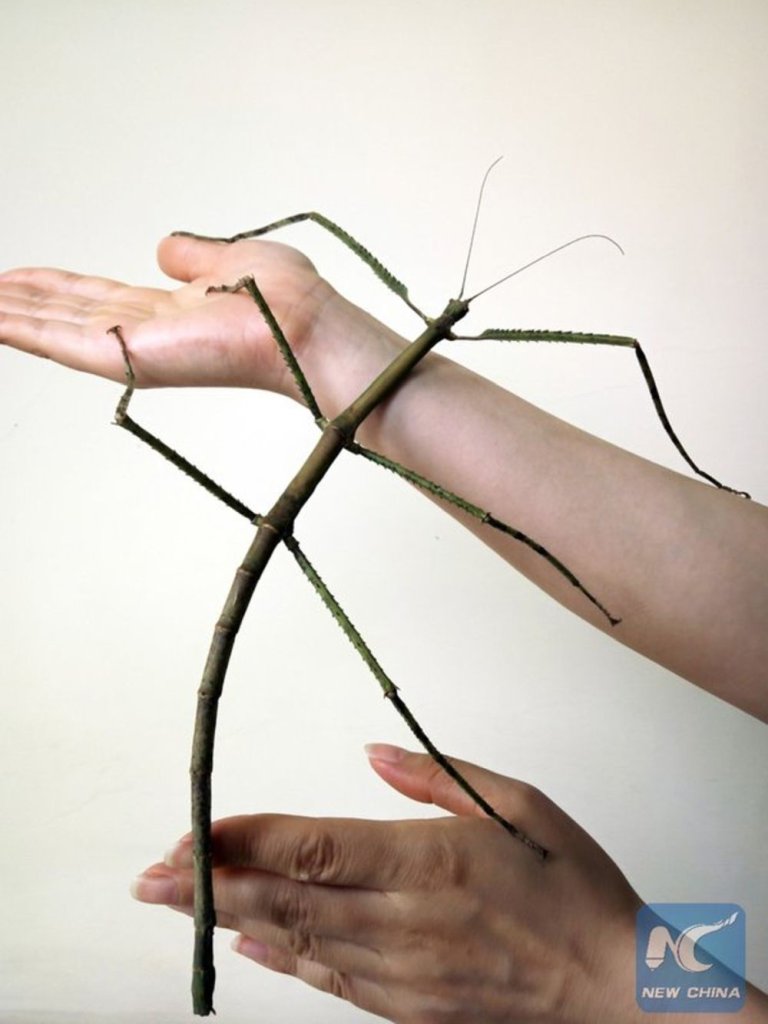Insects have really moved down a peg since the Carboniferous period. They once ruled the Earth as the most dominant species, long before mammals and even dinosaurs had their turn.
Still, they’re the most diverse group of animals there is, with an estimated ten quintillion alive at any one time. They occupy every landmass and are critical to ecosystem function.
While they’ve reduced in size a little bit lately, there are still some crackers out there, and we’re going to take a look at ten of the largest insect species right now.
10. Biggest Flea – Hystrichopsylla schefferi (13mm / 0.5in)
We’re going to start this off with one of the smaller categories, but a giant among them nonetheless.
At around 2mm, your common dog flea is a tiny nuisance: unslappable, capable of pinging into the ether the moment you turn on the light, and comfortable hiding in your covers until you’ve fallen asleep.
But if you were to nest up with a bunch of beavers you might find you end up with a nasty nip from the Beaver flea, and this one would be a lot harder to ignore.
This monster of a parasite is around seven times the size of the fleas we commonly meet on our pets, and the largest flea known. 1
9. Biggest Wasp – Vespa mandarinia (5cm / 2in)
This one strikes fear into the hearts of a lot of people. The Asian giant hornet has a stinger longer than some wasps at 6mm, four times as long as that of a honeybee.

The wasp itself is around 2 inches long and flies around loudly, preying on other insects and inverts. It’s not typically aggressive, but like most wasps, will defend its home furiously when triggered.
Stings are reported to feel like a hot nail being driven into the flesh, and there are some reports of them being able to spray this venom from a distance into an attacker’s eyes – as if they needed to be any more frightening.
8. Biggest Bee – Megachile pluto (6.4cm / 2.5in)
This enormous hymenopteran is found in Indonesia and is known as a resin bee. Its wingspan is what makes it the largest of the bees, and when in flight, can reach over 6cm across.
Also known as Wallace’s giant bee, it comes equipped with disproportionately large jaws that it uses to collect resin from trees.
Despite its colossal size, this is not an animal that’s well understood. The first video footage of one comes from as recently as 2019, and its ecological role is still uncertain. It’s thought that it might have a symbiotic relationship with termites, inside whose nests it commonly builds a home. 2
7. Biggest Ant – Dorylus spp (6.3cm / 2.4in)
The male driver ant might not be the longest ant around, but it’s certainly the plumpest. Roughly tying for length with the giant Amazonian ant species, this drone from an army ant colony in East Africa is known locally as a sausage fly due to its meaty body.

They have formidable-looking jaws and fly clumsily into lightbulbs, but the mandibles are used only for clasping during mating and are not strong enough to administer a bite.
But even this juicy monster isn’t the largest ant – that title goes to the sausage fly’s better half. Queens of the Dolylus colonies grow up to 63mm (2.4 inches) long and are the largest ants known.
They have to be because army ant patrols can contain up to 50 million individuals!
6. Biggest Beetle – Megasoma actaeo (15cm / 6in)
Larvae are always overlooked when insects are being ranked. And this is a strange bias because in many, if not most cases, the larval stage represents the majority of the animal’s life.
Whenever someone tells you an insect only lives for a day, they’re ignoring the larval stage (which may last years). Whenever they tell you the largest beetle is Titanus giganteus, they’re ignoring the larval stage.
Larvae of the Actaeon beetle, Megasoma actaeon, live for around 22 months in the soil: about a quarter of the time they’ll spend as adults. And over that time they grow to alarming proportions. This beetle larva reaches a weight of up to 240g, making it the heaviest beetle, and it’s still a competitor in length, too, at around 15cm.
For adults, the Titan beetle, Titanus giganteus, tops it in length. This beetle is so big that its scientific name doubles up. Again, this isn’t the longest of the group, but it’s not far off, and it more than makes up for it in sheer mass.
They’re longhorn beetles, so their length of 16.7cm includes their long antennae, which is kind of cheating.
5. Biggest Cricket – Deinacrida spp (10cm / 4in)
A case in point regarding the larvae, the largest cricket is commonly said to be the heaviest living insect, the Giant Weta.

This monster of a cricket is around 10cm long and can be seen cutely munching on full-sized carrots in New Zealand.
Their terrifying appearance is a bit misleading; they’re not dangerous (though they can give a nasty bite with their powerful jaws). They’re so ugly, their scientific name means “terrible grasshopper”.
4. Biggest Dragonfly – Austrophlebia costalis (13cm / 5in)
This dragonfly is known as the Giant Darner and is reported to fly faster than any other insect.

Not only is it huge, but it’s also a ferocious predator, and as a member of the Odonata order is likely one of the most successful ones too.
Dragonflies typically kill 95% of their targets, making them possibly the most effective hunters on earth. The Giant Darner is the largest such insect alive today, but as you’ll soon see, not the largest there ever was.
3. Biggest Praying Mantis – Toxodera maxima (18cm / 7 in)
Mantids are apparently hard to measure. There’s not a lot of reliable evidence for the largest one found, but the main candidate is a species of Giant Stick Mantis.
These predators look a lot like their herbivorous cousins the stick insects, and demonstrate incredible mimicry with the woody stems of the plants they hunt among.
Since they’re hard to find and inhabit small ranges, these are rare examples of exceptional insects, and it’s likely some undiscovered contenders may or may not emerge in the coming years.
2. Biggest Insect – Stick Insect ‘Phryganistria chinensis Zhao’ (64cm / 25in)
This is not only the longest stick insect, but it’s also the longest insect alive and makes up an enormous 64cm in length.

Unlike their predatory brethren the mantids, stick insects are gentle creatures with very few defences. Instead of attacking, they rely on their incredible. Mimicry to blend in.
Males and females are slightly different sizes, so have to mimic different plants: males will pretend to be dead bamboo, and females will mimic tree branches.
As they grow, they change habitats, and their colour scheme changes to suit. 3
1. Largest Insect Ever – Giant Dragonfly ‘Meganeuropsis permiana’ (75cm / 29.5in)
As we mentioned, the era of the giant insect lords has long passed, and all that remains are fossils from a lost world.
Among the most exciting are fossils of the giant dragonfly, M. permiana, whose name suggests they ruled the land around 300 million years ago during the Permian period. While it’s commonly known as a dragonfly, it’s more like a sort of evolutionary prototype when compared with modern versions.
Still, it’s a monster. Six times the wingspan of the largest known dragonfly today, this must have been a formidable hunter.
One theory as to how this animal got so big (and why there are none this size left) relates to the higher oxygen levels in the atmosphere during that period. Since insects breathe through their surface, they have a low surface area to volume ratio for gaseous exchange.
Put simply, their skin surface doesn’t provide enough contact points for a very large body. As giants of the animal kingdom, we use infolded, high-surface-area lungs (around 100m2) to reach our large size; dragonflies don’t have these, and so are limited more by the amount of breathable oxygen it has available.
As atmospheric oxygen decreased, so did the size of skin breathers. And that’s a good thing, perhaps. Because a half-kilo, lightning-fast, elite hunter would probably have hindered our development as we progressed from shrew-like mammals into great big fatties. 4
Final Thoughts
That completes our list of the biggest insect species in the world, and ever.
It’s thought insects reached their biggest size over 300 million years ago, during the late Carboniferous and early Permian periods.
This was when there was a higher concentration of oxygen in the air, which allowed huge insects to get enough oxygen through the tiny breathing tubes that insects use instead of lungs.
Their size rapidly reduced, with the evolution of birds and the decrease in oxygen levels. Smaller, more maneuverable bodies allowed insects a better chance of survival. 5
Fact Sources & References
- “The Great Giant Flea Hunt“, The New York Times.
- Oliver Milman (2022), “The World’s Largest Bee and the Cautionary Tale of Its Rediscovery“, Atlas Obscura.
- Insect Museum of West China, “The Discovery of the World’s Longest Insect: Crawling “Tree Branches”“, Arts and Culture, Google.
- Vasika Udurawane (2019), “The biggest insect ever was a huge “dragonfly”“, Earth Archives.
- Tim Stephens (2012), “Reign of the giant insects ended with the evolution of birds“, UC Santa Cruz.
